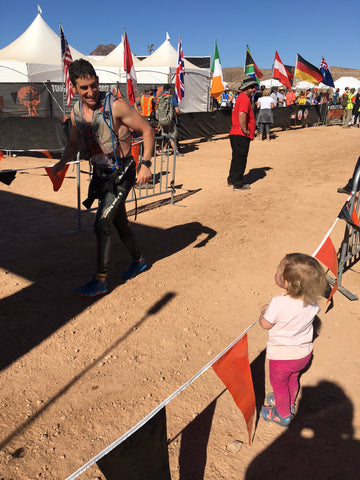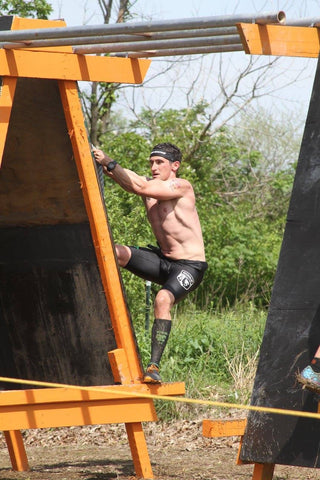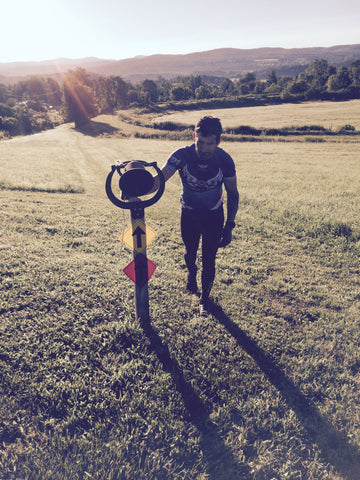6 Minuten Lesezeit
As the OCR Championship season begins to draw to a close, all eyes are on one of the highlights of the obstacle racing calendar - World's Toughest Mudder. This event is one of the most extreme challenges out there and seriously pushes entrants to their limits. One man who knows the race only too well is Evan Perperis, author of 'Strength & Speed's Guide to Elite Obstacle Course Racing' and current holder of the record for most OCR miles in a week (161 during the 7 day/7 venue OCR America). We caught up with Evan recently to catch up on his year and how his training for World's Toughest Mudder has been going.

At the start of every year I try to set some lofty goals. Like any athlete that loves their sport and wants to test their limits, these goals often build upon the previous year’s accomplishments presenting new or harder challenges. In the calendar year 2017, I set off to finish in the top ten of every 24 hour Obstacle Course Race (OCR) in the world. While 2017 is not yet over, at the end of August I did hit a major milestone. Over the last 365 days, I have finished in the top 10 of every 24 OCR in the world with one more lined up for 2017.
Here is a quick recap of each, how I did and why I was glad dryrobe was there to help me.
November 12-13, 2016: World’s Toughest Mudder, near Las Vegas, Nevada
I finished 8th in the longest running and most prestigious 24 hour OCR in the world after completing a gruelling 90 miles and a full 24 hours on the course. World’s Toughest Mudder (WTM) is known for its extreme temperatures. The 75+ F (21+C) degrees during the day is met in stark contrast to the 50ish F (10ish C) degrees at night. Add in multiple cold water crossings and your ability to regulate your body temperature becoming less efficient as you fatigue and it’s a recipe for hypothermia. At the end of the day, dryrobe was there to warm my body temperature back up and keep me healthy. Crawling inside that fluffy robe at the end of such a gruelling event is just as physically rewarding as it is mentally. It continued to help for the next two days as my body temperature would swing wildly going from sweaty to cold providing an easy solution to quickly warming up or cooling off.

April 1-2, 2017: Terrain Race 24 Hour Relay, near Phoenix, Arizona
Arizona in April, no need for a dryrobe there right? Wrong. The temperatures definitely dropped at night more than expected. While not freezing by any means, the constant go/stop of a relay event caused wild fluctuations in my body temperature. dryrobe was there to keep me warm as I waited to start my next lap. When it was go time, I would drop my robe, step forward and start running. How good was the dryrobe? My Strength & Speed teammate and co-host of the Link Endurance OCR podcast, Miles Keller, went out and purchased one the week after the event. Between laps, dryrobe kept my legs warm and the result was a 2nd place finish for the team.

May 27-28, 2017: Dirt Runner’s Midwest Mayhem 24, near Chicago, Illinois
In late May, the temperatures were heating up as long as you were on the course moving. I ended up not using the dryrobe before the event but my pit crew consisting of my wife and daughter used it a ton. Thy were not exercising and generating a lot of body heat so they used it throughout the night sometimes as a jacket, occasionally as a blanket and even as a cushion so my 2 year old could sleep comfortably. The result: flawless pit support from my wife, a happy daughter and a 1st place finish.

June 10-11, 2017: True Grit Enduro 24, near Sydney, Australia
Ahh, nice June weather…except in Australia, June is winter in case you forgot. Luckily the weather was nice…oh no wait…it rained for four days leading up to the race, proceeded to rain through the race and then continued to rain for another three days after the race. dryrobe was there to keep me warm and dry before the race started ensuring I was as comfortable as possible. Post event when my body temperature was low, I collapsed on the ground and took a nap under the dryrobe. Time zone changes and another 24 hour race two weeks before definitely took its toll on me and my performance started to suffer. Around 8 hours into the event I was as high as 5th place but ultimately dropped back to 10th by the 24 hour mark.

July 29-30, 2017: Shale Hell near Killington, Vermont
My plans to finish in the top ten of every 24hr OCR in the world in a calendar year almost came to a crashing halt. The Shale Hell event at the permanent OCR venue in Benson, VT switched dates on me from a free weekend to the same weekend as the CBS Televised event America’s Toughest Mudder Midwest (Chicago). Not to be discouraged, I contacted the race owner and he let me run a shadow run of the actual event. So I went out to the course by myself, followed the same rules and stayed on the course for 24 hours. My performance, had it been done on race day would have put me in 1st place by two laps. While I didn’t need my dryrobe for the event, my dad who was my pit crew used it as the temperatures plummeted to 50ish F (10ish C) degrees.

You may be thinking, that is more than four OCRs, so why is it called a Grand Slam? Well, when I made the plan there were only four 24 hr OCRs on the schedule and since then two more companies have added races to their schedule, hence the outdated name. But I still refer to it as a Grand Slam or sometimes a Super Grand Slam.
The year is not over yet and there is at least one more 24 hour OCR on my schedule for 2017. This November, I will once again head back to Las Vegas for WTM’s final event at that location (according to their website). You can survive the wild Vegas weather and occasional windstorm at the event without a dryrobe, but I think I will be finding it much more bearable with one.
See you in the desert. #getchanged #staywarm
Published on November 03, 2017
